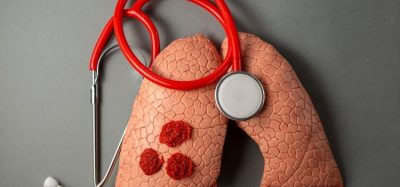Live biotherapeutic products: bridging innovations and challenges in manufacturing
Posted: 13 March 2024 | Lorenz Rindisbacher (Bacthera) | No comments yet
In our third instalment of EPR‘s exclusive ‘Microbiome therapeutics: microscope to medicine’ series, Tue Hodal, Chief Technology Officer and Lorenz Rindisbacher, Chief Quality Officer, Bacthera, explore how live biotherapeutic products (LBPs) represent a transformative shift in medicine, highlighting their unique challenges and potential.


In the dynamic landscape of pharmaceutical innovation, live biotherapeutic products (LBPs) have emerged as a beacon of hope and excitement. Representing a radical departure from traditional pharmaceutical approaches, these products, comprised of living microorganisms, are used for the treatment, prevention, or cure of diseases.
Often referred to as ‘bugs as drugs’ or ‘pharmabiotics’, LBPs actually go beyond these descriptions. Unlike probiotics, which are generally recognised as providing health benefits – mostly by improving the gut microbiota, LBPs are intended for the prevention, treatment or cure of specific diseases and thus fall under drug/pharmaceutical regulations in most countries.
LBPs differ significantly from traditional small-molecule or biological drugs, which are typically easier to manufacture, handle and characterise. Consisting of live bacteria – often strict anaerobes or genetically modified variants – LBPs are designed to exert therapeutic effects through their interaction with human physiology. Production and handling of these organisms, which must be kept alive throughout and beyond the manufacturing process, is highly complex and demands a complete re-thinking of pharmaceutical manufacturing.
…in their ability to modulate the human microbiome… [live biotherapeutic products] offer a promising avenue in modern medicine due to their potential for minimal side effects and cost-effective production”
The potential of LBPs lies in their ability to modulate the human microbiome, the complex community of microorganisms living within our bodies. This modulation has shown promising results for a range of medical conditions, from gastrointestinal to immunological and neurological disorders. LBPs are at the forefront of exploring this uncharted territory of medical science. They offer a promising avenue in modern medicine due to their potential for minimal side effects and cost-effective production.
Typically containing strains with no or limited pathogenic potential, LBPs reduce the likelihood of adverse reactions commonly associated with other drug therapies. The production process of LBPs can be more cost-effective compared to conventional (bio-)pharmaceutical applications, largely due to the scalable nature of microbial cultivation. Consequently, LBPs promise economic benefits and enhanced accessibility for patients, with the potential of reducing overall healthcare costs to society at large.
Overcoming innate challenges of LBPs
However, they are by no means the holy grail of pharmaceutical treatments. While they exhibit efficacy with side effect profiles at the level of placebo, along with low production costs, challenges remain. Every person has a unique microbiome composition, akin to a fingerprint, meaning the therapeutic effect induced by adding living microorganisms to an established ecosystem will vary from patient to patient. Furthermore, the duration of treatment can significantly impact efficacy. Thus, patient populations and study designs need to be carefully selected by LBP development companies, which often face challenging cost versus benefit decisions on their development journeys.
Additionally, the manufacturing of LBPs remains highly complex. While the processing of living organisms into capsules or other formats is well established, developing these processes in strictly anaerobic and humidity-controlled environments and under GMP conditions leads to considerable costs. This is particularly true when producing LBPs for smaller patient populations or demands, where baseline costs, such as running a compliant quality management system and fulfilling the related requirements for microbiological containment, cannot be offset by larger volumes.
Also, the manufacturing process significantly impacts the efficacy of LBPs – to a greater extent than with traditional therapies, which can often only be overcome by applying higher doses of the drug. Achieving and maintaining high viability levels throughout the process and product shelf life is crucial for developing a successful LBP.
Read the previous instalments of EPR’s ‘Microbiome therapeutics: microscope to medicine’ series here:
Microbiome innovation: have we forgotten the basics?
Navigating the unique CMC challenges of oral anaerobic live biotherapeutics
Navigating uncharted manufacturing terrain
The production of LBPs represents a significant departure from traditional pharmaceutical manufacturing. It demands not just expertise in microbiology and bioengineering but also a complete re-evaluation of manufacturing processes. The living nature of these organisms requires strict control over every stage of production, particularly the following aspects:
- Anaerobic handling: A pivotal challenge in LBP manufacturing is establishing and maintaining environments that support the survival and efficacy of these living therapies. Many LBP strains require anaerobic conditions, with exposure to oxygen affecting their viability and therapeutic potential. Specialised equipment, product handling processes, specific standard operating procedures and facilities are essential to create and maintain an oxygen-free atmosphere throughout the entire manufacturing process, from media preparation to the final blistered/bottled product, to ensure that these sensitive organisms are not compromised.
- Humidity control:. Fluctuations in humidity can adversely affect these delicate organisms, either by dehydrating them or promoting unwanted microbial growth, ultimately resulting in cell death and hence loss of potency. To address this, precise humidity control systems are employed, meticulously calibrated to the specific requirements of each strain, ensuring an optimal environment for its cultivation and preservation.
- Gastric acid resistance: Additionally, the effective delivery of LBPs to their place of action represents another crucial factor for their therapeutic effect. Post-production, these products must endure the challenging environment of the human gastrointestinal tract. Acid-resistant or coated capsules have been developed to ensure that LBPs remain intact and fully functional until they reach their target position within the body.1 These advancements in delivery mechanisms are vital for preserving the integrity and efficacy of LBPs from production to administration.
In the face of such complexity, effective management strategies and robust manufacturing standards need to be established. This involves a detailed focus on each critical aspect, supporting the consistent quality and viability of LBPs in line with regulatory requirements and best industry practices.
Meeting demand: capacity and quality in LBP manufacturing
In the emerging field of live biotherapeutic products, scaling production to align with their growing demand is a significant and intricate task. This challenge is compounded by the limited historical data available and the fast-paced evolution of this sector. No LBP treatments have been approved to date (Rebyota® by Rebiotix Inc. and VOWST® by Seres Therapeutics and BIOMICTRA by BiomeBank2 are faecal microbiota products, not LBPs). Therefore, it remains to be seen how physicians and patients will respond to this novel way of treating diseases, how effective these drugs are under market conditions, and if supply chains can be managed efficiently. These and multiple other factors will dictate the requirements for future capacity needs for LBPs. Effective capacity planning therefore requires a dynamic, flexible and adaptive approach, considering both current needs and future developments – without any compromise on product quality or patient safety.
Importance of quality assurance
Quality assurance in the manufacturing of LBPs is particularly critical due to the inherent complexity, natural variability, and environmental sensitivity of living organisms”
Quality assurance in the manufacturing of LBPs is particularly critical due to the inherent complexity, natural variability, and environmental sensitivity of living organisms. This necessitates a rigorous approach to quality control, ensuring that every production stage adheres to the highest standards. Ensuring the purity, potency and safety of drugs is not just a regulatory requirement but a fundamental responsibility towards patient safety and product efficacy. This is particularly true for LBPs, to ensure appropriate control of the characteristics and aforementioned variables inherent to this type of therapeutic. To ensure outstanding safety profiles, the most crucial task for CDMOs working in this field is to maintain the highest quality standards and operational controls, thus preventing contamination with other, potentially pathogenic organisms.
In 2023, the US Food and Drug Administration (FDA) issued several warning letters to companies that commercialised probiotics (live bacteria or yeast) as a therapy for premature babies. These treatments resulted in two dozen reported adverse events since 2018 and one fatality in 2023, showing the importance of high quality pharmaceutical standards for LBPs and strict adherence to the regulatory requirements for development and approval for therapeutic products.3
This incident serves as a reminder to all who bear responsibilities in this pioneering field. At Bacthera, we understand that the path to revolutionising treatment with LBPs is complex and filled with responsibilities. As we learn from these challenges, we are aware of the delicate balance between driving innovation and ensuring quality and safety, so that our products not only reach their therapeutic potential but do so in a way that satisfies highest expectations from patients and regulators.
Looking ahead: the future of LBP manufacturing
As a CDMO in this industry, we are committed to this endeavour to contribute to shaping the future of LBPs. While challenging, the path is indeed bright and full of potential.
Though the complexity and patient-to-patient variability of the human microbiome, including its uncountable metabolites and metabolic pathways, are yet to be fully mastered, several products are already on a promising path to commercialisation, particularly in the US, EU, China and South Korea.4
As we look forward, we envision a world where LBPs play a pivotal role in treating a variety of diseases, sometimes in combination with other therapeutic approaches, offering new hope to patients who have few other options.
About the authors
Tue Hodal has been Chief Technology Officer of Bacthera since November 2023. In July 2021, Tue was promoted to Chief Manufacturing Officer with responsibility for all sites within the Bacthera network. Tue was appointed Project Director in November 2019, after supporting Chr. Hansen in setting up the JV, Bacthera.
With over 15 years’ experience leading different parts of the supply chain in the pharmaceutical industry, from production and global planning to engineering and operational excellence – Tue has mostly worked in larger Pharma companies like Novo Nordisk, Lundbeck and Xellia Pharmaceuticals. He also has more than five years of consultancy experience within the pharma and oil & gas industries.
Lorenz Rindisbacher has served as Chief Quality Officer of Bacthera since December 2022. Since 1999, he held several senior-level quality leadership positions in the biopharma environment, at companies such as Crucell, Merck KGaA, and CSL Behring, managing local and global quality organisations and driving the implementation of effective, efficient, and compliant quality management systems
References
- Enteric capsules that have been developed to pass the GI tract. [Internet] Lonza. [cited 2024Feb]. Available from: https://go2.lonza.com/enprotect
- BiomeBank announces world first regulatory approval for donor derived microbiome drug. [Internet] BiomeBank. [cited 2024Mar]. Available from: https://www.biomebank.com/news/biomebank-announces-world-first-regulatory-approval-for-donor-derived-microbiome-drug/
- Commissioner O of the FDA Raises Concerns About Probiotic Products Sold for Use in Hospitalized Preterm Infants [Internet]. FDA. 2023. Available from: https://www.fda.gov/news-events/press-announcements/fda-raises-concerns-about-probiotic-products-sold-use-hospitalized-preterm-infants
- LBPs on the way to commercialisation. [Internet] Bacthera internal market intelligence; GlobalData Database; Hansonwade Beacon Database.
Related topics
Biologics, Biopharmaceuticals, Bioproduction, Drug Development, Drug Manufacturing, Drug Safety, Good Manufacturing Practice (GMP), Industry Insight, Manufacturing, Microbial Biological Manufacturing, Microbiome therapeutics: microscope to medicine, Microbiomes, Production, QA/QC, Regulation & Legislation, Research & Development (R&D), Therapeutics









